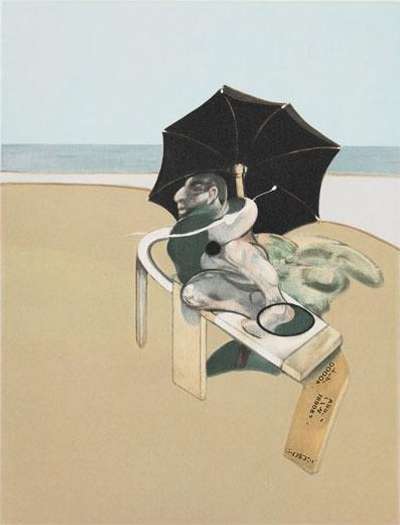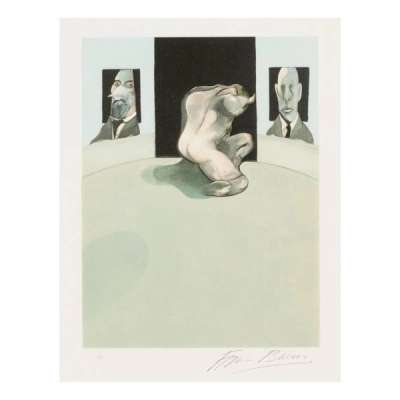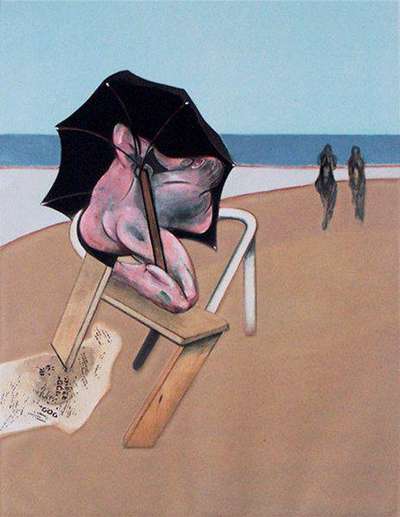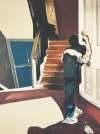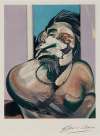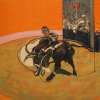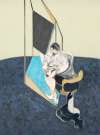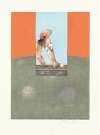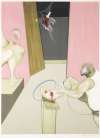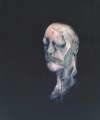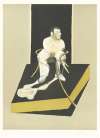The
Metropolitan Triptych
This collection comprises prints after Francis Bacon's The Metropolitan Triptych painting. The works are characteristically ominous, with black parasols and rigid, rail-like furniture reminiscent of a hospital bed or morgue featuring alongside Bacon’s signature melting figures. The series reflects the turbulence and trauma in the artist’s life around that period.
Francis Bacon The Metropolitan Triptych For sale
The Metropolitan Triptych Value (5 Years)
With £37102 in the past 12 months, Francis Bacon's The Metropolitan Triptych series is one of the most actively traded in the market. Prices have varied significantly – from £1291 to £26367 – driven by fluctuations in factors like condition, provenance, and market timing. Over the past 12 months, the average selling price was £12367, with an average annual growth rate of 2.01% across the series.
The Metropolitan Triptych Market value
Auction Results
| Artwork | Auction Date | Auction House | Return to Seller | Hammer Price | Buyer Paid |
|---|---|---|---|---|---|
The Metropolitan Triptych Francis Bacon Signed Print | 16 Apr 2025 | Phillips New York | £5,525 | £6,500 | £8,500 |
 The Metropolitan Triptych (left panel) Francis Bacon Signed Print | 1 Apr 2025 | Doyle Auctioneers & Appraisers | £3,103 | £3,650 | £4,950 |
 The Metropolitan Triptych (right panel) Francis Bacon Signed Print | 3 Jun 2023 | Christian Hesse Auction | £2,508 | £2,950 | £3,750 |
 The Metropolitan Triptych (centre panel) Francis Bacon Signed Print | 10 May 2022 | Bellmans, Sussex | £3,400 | £4,000 | £4,900 |
Sell Your Art
with Us
with Us
Join Our Network of Collectors. Buy, Sell and Track Demand
Meaning & Analysis
This collection of prints is entitled The Metropolitan Triptych collection. Comprising of three prints, The Metropolitan Triptych 1974—1977 (left panel) (1981), The Metropolitan Triptych (centre panel) (1975), and The Metropolitan Triptych (right panel) (1975), the collection is chiefly concerned with a three-part work painted by Irish-born artist Francis Bacon between 1974 and 1977. Ambiguously entitled Triptych 1974-1977, this painting is the last in a series of triptychs Bacon painted for a 1974 retrospective exhibition held at the Metropolitan Museum of Art in New York.
The 1970s were a particularly tumultuous period in Bacon’s career, and this collection plays visual testimony to this. In 1971, two days prior to the opening of the artist’s largest-ever retrospective at the Grand Palais in Paris, his onetime lover and muse, George Dyer, took his own life following a long struggle with alcoholism and depression. Sparking a sustained period of intense introspection and sadness in Bacon’s personal life, this event – and its gravity – was directly reflected in the artist’s work. In the years that followed, Bacon embarked on his so-called ‘Black Triptychs’, which he described as a visual tribute to Dyer’s life and influence. Works in the series, such as Triptych August 1972, deal explicitly with Dyer’s suicide and were designed to exorcise Bacon of an intense guilt catalysed by the death of his friend. In The Metropolitan Triptych collection, we are party to one of the finest works Bacon created in reference to Dyer’s death.
Depicting the deconstructed, contorted, and resoundingly animalistic body of Dyer, marooned on a sandy beach, each of the three works portray him on the edge of a dark section of paint. A void of sorts, this visual motif is also present in three earlier examples of the ‘Black Triptychs’, including In Memory of George Dyer, 1971 and Triptych May-June 1973; a possible figuration of Dyer’s impending doom, black paint contrasts with rigid, rail-like forms (see the left and right panels), painted in white and reminiscent of a hospital bed or morgue. In the central panel, an elliptical section of paint was used to cover up a figure inspired by the photography of Eadweard Muybridge; resembling a bird stalker armed with a loaded rifle, Bacon erased the figure in order to place a greater emphasis on non-representational geometric form – a standout feature of the triptych that enhances its deeply metaphorical and mysterious nature.

